Marilyn, a magnetic, megawatt force and slave to success
Blonde is about how Hollywood and the men behind it created, chewed up and spat out a star.
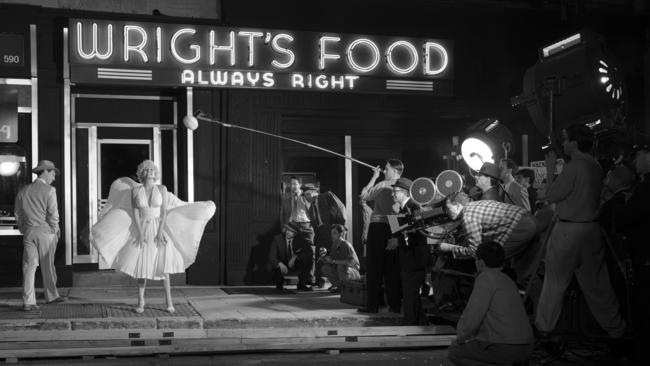
Blonde (R18+)
Netflix
★★★★
“F..k you and f..k this movie.” In Blonde, written and directed by Australian filmmaker Andrew Dominik, this is what Marilyn Monroe screams at director Billy Wilder on the set of the 1959 comedy Some Like It Hot. Did it happen? Maybe. Probably. The rift between Monroe and Wilder is well-documented.
Did other altercations, good and bad, physical and psychological, that we see in this movie happen to Marilyn Monroe?
Maybe. Maybe not. Viewers will wonder, “Is that true?” throughout this 166-minute drama that is seen through her perspective.
This is not a biopic. It is a reimagined life of Marilyn, based on the 2000 novel by Joyce Carol Oates, that uses some real events as a loose biographical map to explore the blonde bombshell’s inner self.
As such it has similarities with another Australian-directed film about the rise and fall of an American idol: Baz Luhrmann’s Elvis.
If we continue that thought of the biographical map, then it’s one of the old-time ones that carries a warning: here be monsters.
Some Like It Hot, with Tony Curtis and Jack Lemmon, is a funny film. Blonde is not. It is a long, relentless, bleak take – yet still dazzling to look at – on how Hollywood and the men behind it created, chewed up and spat out a star.
At its centre is not Marilyn Monroe but the real woman who wears her mask: Norma Jeane Baker. “I am a slave to this Marilyn Monroe,’’ she complains.
Asked about casting the lead, Brad Pitt, a producer on this film and a long-time collaborator with Dominik, said, “That’s a tough dress to fill.”
The Cuban actor Ana de Armas (Knives Out, No Time To Die) fills it magnificently. She looks and sounds – that breathy voice (though it’s not mentioned this started to overcome a stutter) – like Marilyn Monroe.
She is at her best, however, as Norma Jeane, a woman on the permanent verge of a nervous breakdown. “She’s not a well girl,’’ says her personal make-up artist Allan “Whitey” Snyder (Toby Huss). “If she could be she would be.”
It’s the moments where Norma Jeane, erratic, depressed, tearful, pill-popping, transforms, in the blink of an eye, into the magnetic, megawatt force of Marilyn Monroe that define de Armas’s performance.
Such moments also put Hollywood history in a darker light. There’s Marilyn standing over a subway grate, her dress billowing up to reveal her white knickers, to promote Wilder’s 1955 film The Seven Year Itch.
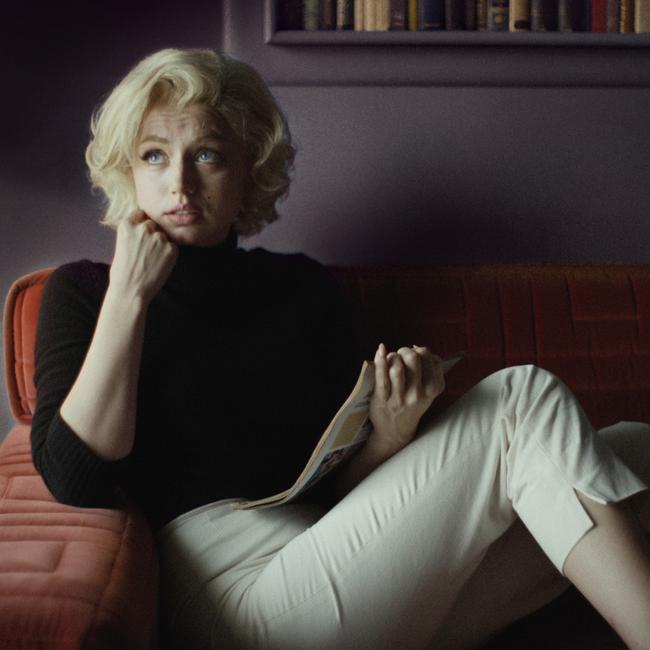
This scene, brilliantly shot (cinematographer Chayse Irvin), is a circle of hell one in this movie. It’s about the leering men who surround her, suffocate her. It is filmed in black and white. There is nothing colourful about this for her.
We’re in colour when Marilyn attends the premiere of Howard Hawks’ 1953 film Gentlemen Prefer Blondes. She’s in a bright purple dress on the screen, singing Diamonds are a Girl’s Best Friend, but the colour wanes as we pan into the audience and see her sitting there, the only person not smiling.
The jump between B&W and colour throughout this movie is perhaps a means of letting us into Marilyn’s mind. This story is told from her viewpoint, and it is not a pretty one.
Dominik omits a lot from Marilyn’s 36 years. The movie opens with young Norma Jeane (Lily Fisher, who is terrific) surviving – just – with her mentally unstable mother Gladys (a harrowing Julianne Nicholson).
We then move to the magazine covers, nude calendars and her first film audition, where she is raped by “Mr Z” (no prizes for guessing this is studio boss Darryl Zanuck, the pre-Weinstein Weinstein).
As all of this happens, the song Every Baby Needs Da-da-Daddy, from her 1948 film Ladies in the Chorus, plays softly in the background.
The placement of such show tunes, including Bye Bye Baby, alters their meaning. The original music written for the movie, equally brooding, is scored and performed by Nick Cave and Warren Ellis.
We move on. There is a long-term threesome with Charles Chaplin Jr (Australian actor Xavier Samuel) and Edward G. Robinson Jr (Evan Williams). Her first husband is not mentioned. Her second, baseball star Joe DiMaggio (Bobby Cannavale), beats her. Her third marriage, to playwright Arthur Miller (Adrien Brody), starts out well but ends poorly. She, a girl without a father, calls each of her husbands “daddy”.
The worst of all the men in her life is President John F. Kennedy (Caspar Phillipson). There is more than one scene in this movie that merits the R-rating but the one between Marilyn and JFK guarantees it.
Yet Dominik does not go as far as Oates when it comes to the Kennedy brothers. In a recent interview she repeated her view that it was “possible” Marilyn was murdered.
There are scenes that are difficult to watch. The JKF one. Intra-uterine ones involving Marilyn’s failed pregnancies.
There is no suggestion Marilyn is not flawed but the overwhelming message is that she is a victim from beginning to end.
This is Dominik’s fifth feature, following Chopper (2000), The Assassination of Jesse James by the Coward Robert Ford (2007), Killing Them Softly (2012) – both starring Pitt – and the 2016 documentary about Nick Cave, One More Time With Feeling.
It is interesting that three of his four non-documentary films document – and fictionalise – the lives of real people.
Blonde is a strange movie. There’s no ducking that. I like it, especially for de Armas’s tour de force, but I can see how others may not.
Under Cover (PG)
In cinemas from October 6
★★★½
An estimated 240,000 Australian women aged over 55 are homeless or at risk of homelessness. Under Cover, written and directed by Sue Thomson, shares the stories of 10 of them.
“On the news they’re saying so many women are going to be homeless in the next four to five years,’’ says Suzella, who lives in a caravan park. “I hope to God I am not one of them.”
This touches on the ongoing vulnerability of the women. Suzella does have a home but there’s no guarantee she will keep it. Developers have the caravan park in their sights.
Women over 55 are the fastest growing demographic when it comes to Australians facing housing stress. That’s why Thomson, an experienced documentary maker, chose this age group.
She spent two years finding and talking to the women in this film, which is being released ahead of World Homeless Day on October 10.
“Homelessness is often seen as a men’s issue. What comes to mind is a man sleeping rough on a park bench,’’ says narrator Margot Robbie.
“You don’t tend to think about someone’s daughter, mother or grandmother. They are often hidden. Out of sight, out of mind. It is a crisis on our doorstep.”
That Robbie, a Hollywood star, agreed to narrate this low-budget documentary, is a coup for the director, who hopes her involvement will bring a wider audience to the film.
In an interview on The Curb website, Thomson says that when she first contacted Robbie’s agents, “It was like, ‘It’s Margot Robbie. You’ve got to be out of your mind’.’’ But Robbie, who grew up in a single parent household, said yes.
Marriage breakdowns, fleeing domestic violence, a lack of superannuation and being considered too old to rejoin the workforce are leading reasons for the growth in homelessness for women over 55.
As Linda puts it, “We’ve all done the right things. We got married, we raised children, we gave up careers. Life was pretty good, and then it happened suddenly.”
The 10 women have their own stories to tell. Some are living in their cars, others in assisted accommodation run by YWCA and newer groups such as Housing All Australians.
One of them is the award-winning Indigenous author Claire G Coleman, who spent a decade living in her car and on the streets. She now has a home but warns, “It could happen to anybody.’’
Mary, who had an Indigenous mother and white father, draws a circle between being placed with foster parents as a child and her present fear, at 84, that she will be “kicked out again”.
While this documentary is a sobering wake-up call about the fraying of the Australian dream of owning that quarter-acre block, it is not without hope, or humour.
Margaret, who lives in her van, is upbeat about life on the road. “This is my home,’’ she says with a smile as she opens the door to her “room on wheels”. “This is my little life and life is good.”
And Susan, living in assisted housing, says, perhaps with the narrator in mind, “If by any chance George Clooney breaks up with Amal and we finally hook up, he can move into my apartment with me, but it will still be my apartment.”
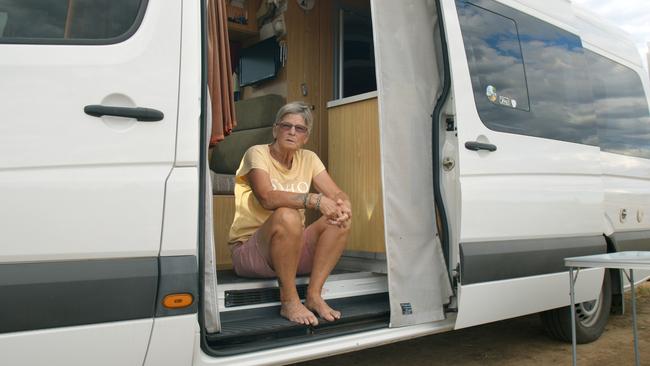


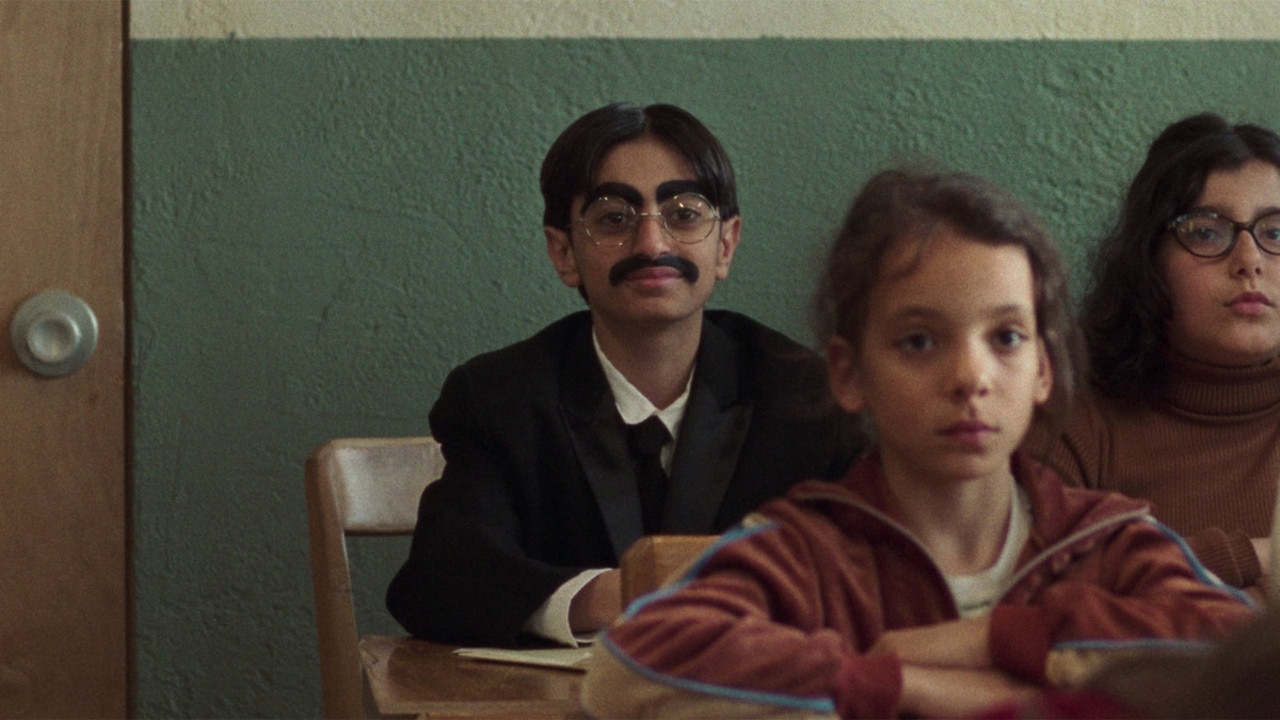
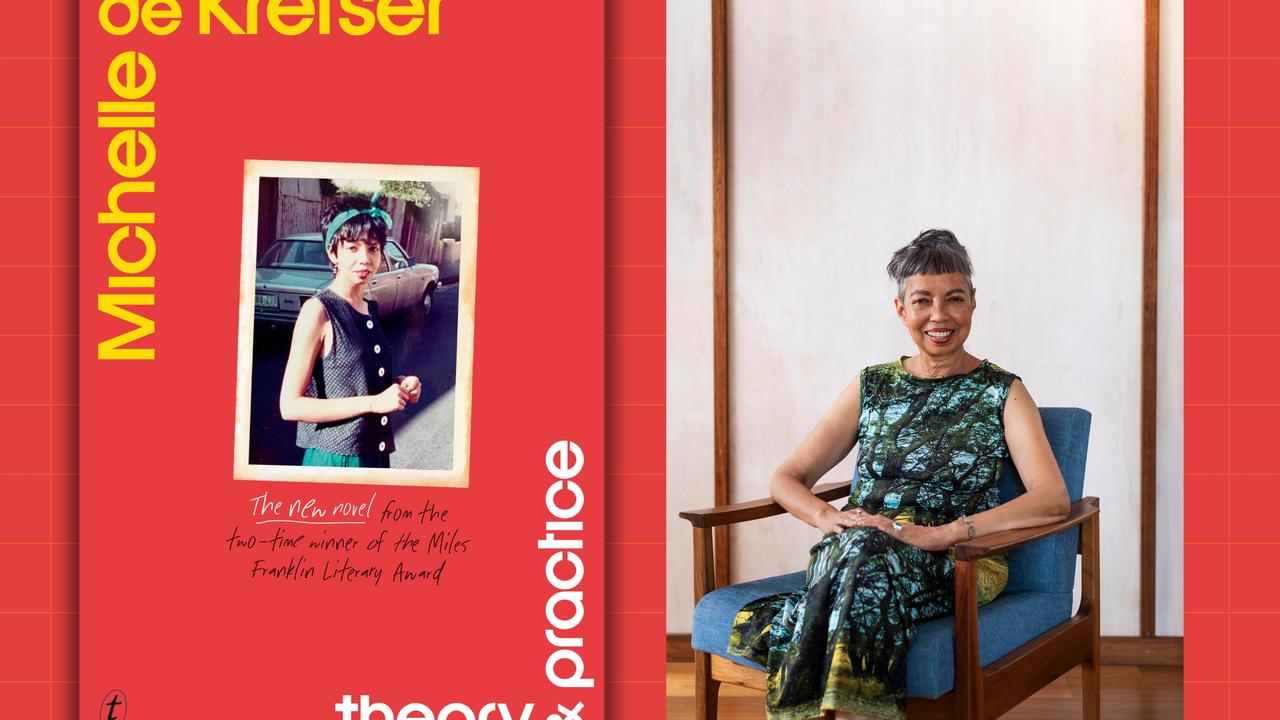
To join the conversation, please log in. Don't have an account? Register
Join the conversation, you are commenting as Logout